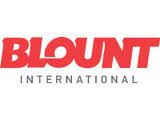On Monday, February 10, Blount issued a broad press release lowering its 2013 guidance and offering 2014 guidance that was below the Street expectations. Management held a conference call Tuesday afternoon to explain the results and outlook. Other corporate information was offered as well, including new 2018 targets and an update on the company’s long-term supply agreement with Husqvarna (extended from 2015 to 2017). Blount will again delay its filings because of the previously announced material control weakness, and the results today are its best estimate as of now. Blount usually reports fourth-quarter earnings in March.
Although a miss was not entirely unexpected, the revision was pretty big with implied diluted GAAP EPS of about $0.58 versus our expectation of $0.67 for 2013. The new 2014 guidance implies EPS at about $0.85 versus our model at $1.02, although we figured there would be downside. On a P/E basis, shares are trading at 15.5 times our 2014 EPS estimate and 13 times our 2015 EPS forecast. On a TEV/EBITDA basis, the stock is trading at roughly 7.5 times our 2014 EBITDA estimate and 7.0 times our 2015 EBITDA forecast. Given high amortization associated with acquisitions and Blount’s leveraged buyout past, investors tend to use TEV/EBITDA or cash earnings to value the stock.
Somewhat surprisingly, the stock was only down a couple a percentage points for most of the day and staged a slow, slight recovery on very light volume, closing down 1.5%. We believe the reason is threefold. First, expectations were relatively low and Blount has missed results fairly consistently for the past two years. Second, the new 2014 outlook should have cleared the decks for limited negative revisions. The 2014 outlook only implies revenue growth of 3% and EBITDA growth of 7%, and it seems that markets are improving. Third, Blount extended its existing supply agreement with Husqvarna by two years until 2017, which helps mitigate the risk of its business falling off a cliff. The biggest issue might be a lack of catalysts. Intraquarter color is usually light, although this year there could be some market color at Conexpo in March.
That leaves execution and quarterly results as the main drivers for the year as end-markets slowly recover. Although the results were surprisingly bad and investors have become weary of the numerous revisions and operating inefficiencies, there was some positive news. For example, free cash flow of $67 million was solid for 2013; the company is considering capital allocation plans that are more shareholder friendly (share repurchases, dividend, and debt repayment), restructuring efforts will have a benefit (although we are surprised that EBITDA are not higher in 2014 given the cost cuts), and the company will continue to be a supplier to Husqvarna until at least 2017, which will give it time to prepare for its entry.
Blount’s 2014 sales and EBITDA guidance are $925 million to $950 million and $130 million to $135 million, respectively. Sales were in line with our expectations and consensus, but EBITDA were lighter as the company expects to step up investments. We had expected EBITDA to increase because of restructuring cost savings. We were initially concerned by the lack of leverage in the outlook since sales are expected to increase by about $40 million at the midpoint, but EBITDA are only forecast to grow by $7.5 million while the company is expected to yield substantial cost savings from restructuring. The Carlton consolidation is nearly complete.
This will save the company $6 million to $8 million a year. There will be an additional $1 million expense in the first quarter as the company completes the transition out of the old Carlton facility. Blount will also consolidate its North American blade plant production into a single facility in Kansas City, Missouri, and close the Mexican plant. This will save $2 million annually once complete, and will cost between $1 million and $2 million in 2014. However, the company noted that it needs to invest in its FRAG product line; it has five new products coming out and will also spend an additional $3 million on SG&A for wages and bonuses. Higher SG&A is expected to offset FRAG and FLAG gross margin expansion of 150 to150 basis points. The company argues that investments are necessary for FRAG to hit its 15% 2018 margin targets.
Discover more from Tech News
Subscribe to get the latest posts sent to your email.










